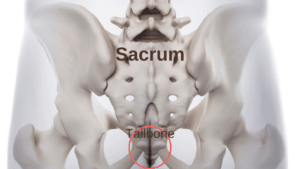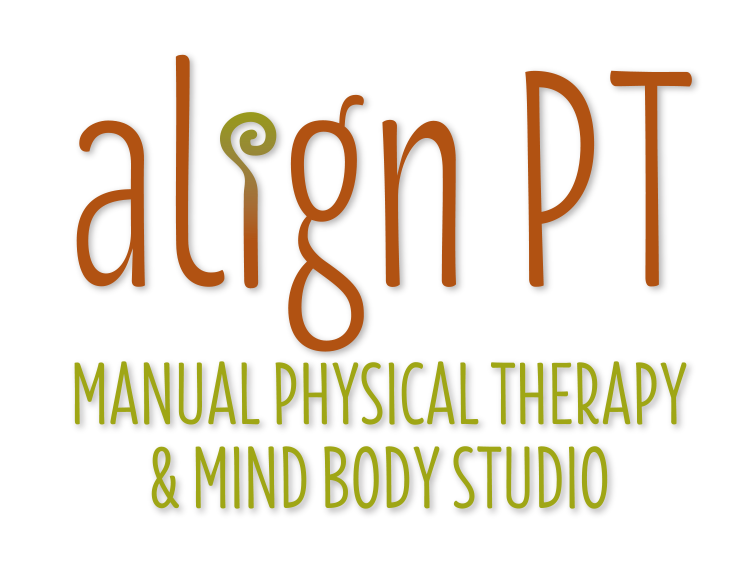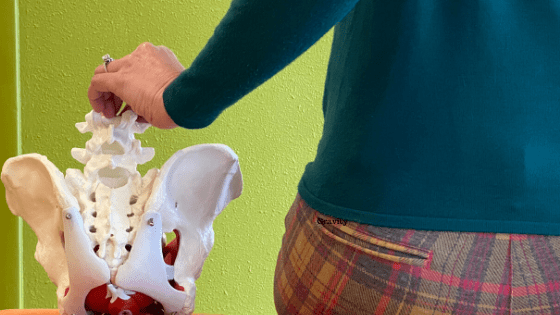by Michele Forsberg PT, MS
When someone comes to physical therapy for constipation, pain with sitting, bladder symptoms, libido issues and sacroiliac pain; I ask them if they’ve ever fallen on their tailbone or had any tailbone trauma. This would include any fracture or injury during childbirth. Usually they say yes, but note that it was many years ago and they haven’t really thought about it much. Sometimes they aren’t sure if they have had a tailbone injury or not. Often these injuries are old and occurred during childhood, so it makes sense that they would not remember. Kiddos fall a lot, so it’s hard to recall those things when we are adults.
In these clinical situations, what usually happens when I palpate the tip of their tailbone, aka the coccyx, is that they jump and say, “ouch!”
Then, I say, “Hmm” to which they reply, “But doesn’t that hurt everyone?”
My answer to that is a big “No”.
If your tailbone hurts, there has likely been some kind of trauma to the actual bone or the tissues surrounding it have been compromised. There is likely a good deal of scar tissue surrounding the tailbone, ligaments, and organs in the pelvic region as a result.
Did you know that the coccyx has connections to several tissues in the pelvis; the sacrotuberous, sacrococcygeal, and anococcygeal ligaments; the levator ani and coccygeus muscles of the pelvic floor. The coccyx is also connected to and has a direct effect on the dura mater which is the fascial coating that surrounds the brain and spinal cord. Imagine if you will a tailbone that is pulled to one side, compressing some of the pelvic floor muscles and organs on that side and also placing uneven pressure on the dura mater. This could have an effect all the way up to the neck and head, causing uneven pressure and pulling on the whole deep fascial and nervous system. I have had a few patients tell me that their chronic headaches decreased or had gone away after releasing restrictions around the coccyx.
Coccyx mobility is something we always look at with our clients. Releasing the tissue around that tiny bone can have profound effects on the functions of the bladder, bowel, reproductive organs, headaches, and more. Now I bet you are touching your tailbone right now to see if it hurts, right? If you are, make sure you are actually on your tailbone. Many people mistake the sacrum for the tailbone.

Many people mistake the sacrum for the tailbone.
Not sure about this? Wondering if pelvic physical therapy can help you with the symptoms listed in this article?
If you live in or around Longmont, Colorado, we are happy to talk with you for free either on the phone or for an in-person Discovery Session at no cost. Give our physical therapists a call and schedule it now.


I love your articles.Will you please put me on your mailing list. I’m a MT in Eagle, I do abdominal work & have clients I would like to refer for pelvic PT.
Thanks so much for your comment, glad you enjoy our articles! I added you to our mailing list. Hope to connect with you sometime 🙂
First, I’m not sure how you can spell all of those words!!! ?
That said, I diid not have the knowledge of tail bone and sacrum proximity.
Michele keep writing. It is never too late to learn. Thank you!!!
You’re right! It’s never too late. Thanks for your encouragement.
Thanks for the helpful article. Do you have any recommendations on PTs based in Southern California that have a history of treating chronic tailbone pain?
Hi Christopher,
Glad you found it helpful.
I would look into pelvic floor physical therapists, there are lots of resources you can check.
Here are a few:
https://pelvicguru.com/directory/
https://pelvicrehab.com/